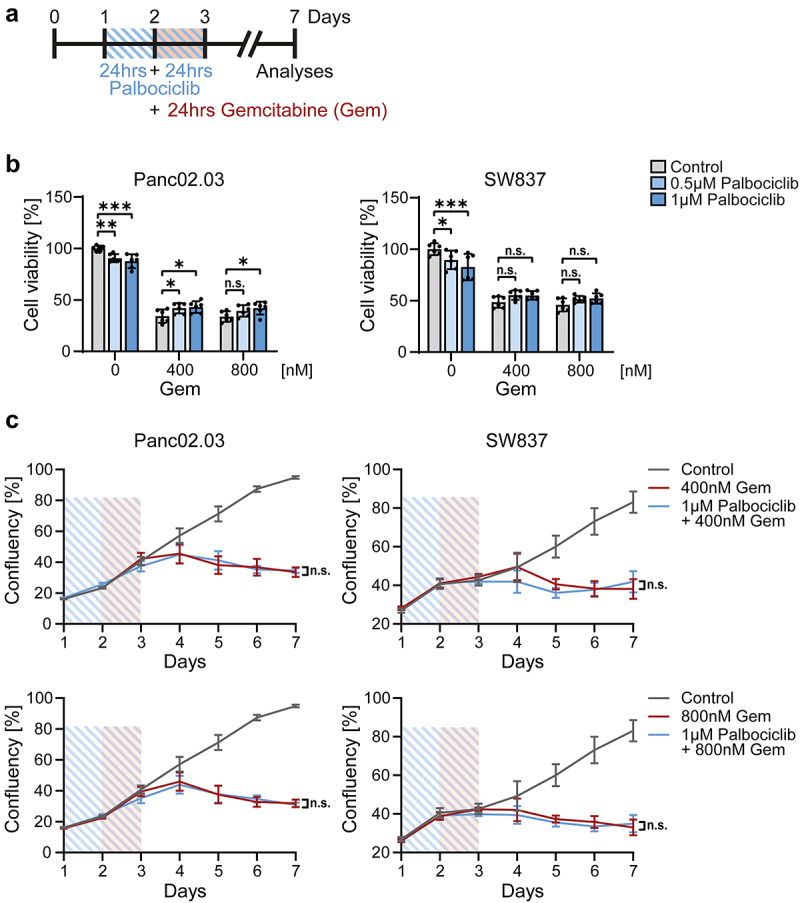Figure 4.

RB1-mutant cancer cells are not protected against gemcitabine by palbociclib.
Note: a. Schematic overview of drug treatment. After pre-culturing, pancreatic Panc02.03 and colonic SW837 cells (both carrying RB1-deletions) were treated with palbociclib for 48 hrs (blue lines), with co-treatment by gemcitabine (Gem) for the final 24 hrs (red rectangle). On day 3, all drugs were removed, and cells were cultured for 4 d in normal growth media.
b. Panc02.03 cells (left) and SW837 cells (right) were treated as described in a. Control, untreated cells. Cell viability was determined with CellTiter-Glo assays on day 7 to reveal only minor differences inferred by palbociclib pretreatment. Mean ± SEM from two biological replicates, each with three in-plate replicates (n = 6). Untreated control (0 nM gemcitabine and 0 µM palbociclib) was set 100%. Two-way ANOVA with Dunnett’s multiple comparison test, *p < 0.05, **p < 0.01, ***p < 0.001, n.s. not significant.
c. Proliferation of Panc02.03 (left) and SW837 (right) cells. Cells were treated as in a. Cell confluency was measured daily via bright field imaging and calculated as percentage of covered area. Mean ± SEM from two independent experiments with three in-plate replicates each (n = 6). Control (gray line) was used for both gemcitabine concentrations. Blue lines, palbociclib for 48 hrs. Red rectangle, co-treatment with gemcitabine (Gem). Student’s t-test on day 7, n.s. not significant. Palbociclib did not significantly affect the sensitivity of the RB1-deficient cancer cells toward gemcitabine.
